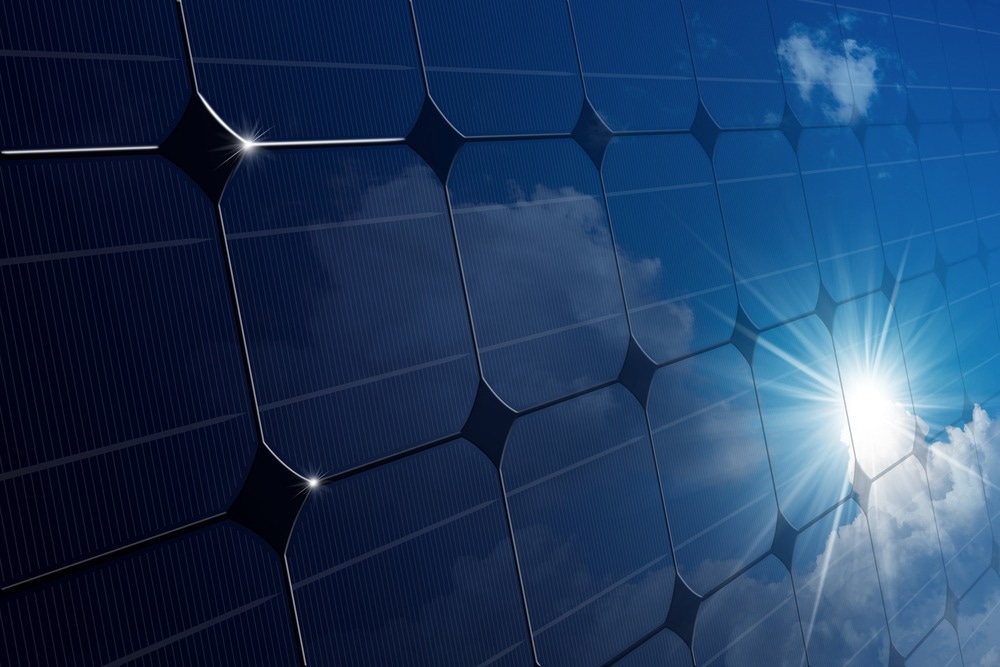In a paper recently published in the journal ACS Energy Letters, researchers utilized copper(I) thiocyanate (CuSCN) in order to create a hole transport layer (HTL) for various inverted perovskite solar cells (PSCs) and organic solar cells (OSCs). It was determined that the inverted PSCs with doped chlorine had superior performance compared to those with pristine CuSCN.

Study: Cl2‑Doped CuSCN Hole Transport Layer for Organic and Perovskite Solar Cells with Improved Stability. Image Credit: Alberto Masnovo/Shutterstock.com
Background
For optoelectronic applications, CuSCN has several benefits as an HTL. They have characteristics like a larger electron mass than the holes and band gap energy in the UV range, which enables their outstanding hole-transporting characteristics and broadband optical transparency. The CuSCN layer in PSCs and organic solar cells (OSCs) enables the removal of the photoactive layer holes, thereby enabling all-wavelength irradiance to approach the layer along with the reduction of parasitic absorption.
CuSCN is well recognized for its processing flexibility along with its remarkable optoelectronic properties. Numerous solution-based deposition techniques for CuSCN at low temperatures, including electrochemical deposition, doctor blade techniques, and spin coating, have been reported. However, its processing flexibility can sometimes be more remarkable than the conductivity of CuSCN films made from a solvent based on sulfides. Despite having improved p-type properties and being easy to dope, Cl2- CuSCN is yet to be used as an HTL for applications in solar cells.
About the Study
In this study, the team used a dry etching setup with controlled Cl2 concentration and background pressure to expose thin films of CuSCN to Cl2 gas. Consequently, CuSCN films having substantially higher conductivities were obtained. Furthermore, the impact of treating Cl2 on the functionality of CuSCN-based inverted PSCs and OSCs was studied. It was determined that the power conversion efficiencies (PCEs) of the PSCs and OSCs were increased by chlorination to 20% and 15%, respectively.
Furthermore, compared to instances of pure CuSCN and poly(3,4-ethylenedioxythiophene) polystyrene sulfonate (PEDOT:PSS) HTLs, solar cell devices with Cl2-CuSCN HTLs experience less deterioration from light and heat stress.
The team initially carried out X-ray photoelectron spectroscopy (XPS) experiments of films of CuSCN to examine the difference in the oxidation state of copper (Cu) after and before Cl2-treatment in order to assess the effects of the treatment. Further, Kelvin probe force microscopy (KPFM) was used to evaluate changes in the exposed films’ work functions (WFs).
Subsequently, thin-film transistors (TFTs) were fabricated, and the CuSCN layers were exposed to Cl2 in a controlled manner. The performance of the reference cells built using PEDOT:PSS HTLs and the CuSCN films exposed to Cl2 was then compared. Moreover, utilizing PBDB-T-2F:Y6 and PBDB-T:F-M as the photoactive layers, conventional bulk heterojunction (BHJ) OSC devices were synthesized. Additionally, the OSC stabilities were probed to determine optimal transport properties using maximum power point tracking (MPPT) in vacuum conditions. Inverted PSCs based on methylammonium lead iodide (MAPbI3) were created to demonstrate the applicability of the Cl2-CuSCN doping method.
Observations
The present study firmly demonstrated a simple methodology to enhance the CuSCN films’ conductivity by Cl2-doping. As soon as Cl2 treatment was applied to the samples, the WF immediately decreased by roughly 0.3 eV and stabilized at 5.35 eV. This showed movement of the Fermi level nearer to the valence band of CuSCN (-5.4 eV), where the Cl2 exposure resulted in a significant p-type doping effect. All CuSCN-based devices that were exposed to Cl2 exhibited almost no modulation and functioned more like conductors than semiconductors. 15 minutes of exposure to Cl2-derived optimal devices.
Moreover, the overall performance of the devices was improved by the Cl2-CuSCN films’ outstanding p-type characteristics. Cells with CuSCN as the HTL and a photoactive layer of PBDB-T:F:M showed the highest PCE of 9% with a fill factor (FF) of 64.4%, open-circuit voltage (VOC) of 0.95V, and a short circuit current density (JSC) of 14.6 mAcm-2. Notably, the performance was further enhanced when PBDB-T-2F:Y6 was utilized. Furthermore, the VOC value was significantly improved after CuSCN films were exposed to chlorine for 10 minutes. Finally, calculations on the electronic densities of states (DOS) based on density functional theory (DFT) demonstrate that chlorination of the CuSCN surfaces generates extra holes by changing the position of the CuSCN's Fermi level nearer to the valence band maximum. The Cl species entering the bulk of CuSCN produce a comparable electronic effect. Furthermore, the existing Cl atoms change the WF of CuSCN.
Conclusions
To summarize, CuSCN was exposed to Cl gas to enhance the properties of solar cell devices that use these films as HTLs. The findings demonstrated the broad usability of Cl2-doped CuSCN in the field of third-generation solar cells. According to the authors, this study opens up a bigger opportunity to completely unlock CuSCN’s potential in solar cell applications.
More from AZoM: A Closer Look at Semiconductor Test Equipment
Reference
Liang, Jian-Wei et al., Cl2‑Doped CuSCN Hole Transport Layer for Organic and Perovskite Solar Cells with Improved Stability, ACS Energy Lett. 2022, 7, 3139−3148, https://doi.org/10.1021/acsenergylett.2c01545
Disclaimer: The views expressed here are those of the author expressed in their private capacity and do not necessarily represent the views of AZoM.com Limited T/A AZoNetwork the owner and operator of this website. This disclaimer forms part of the Terms and conditions of use of this website.